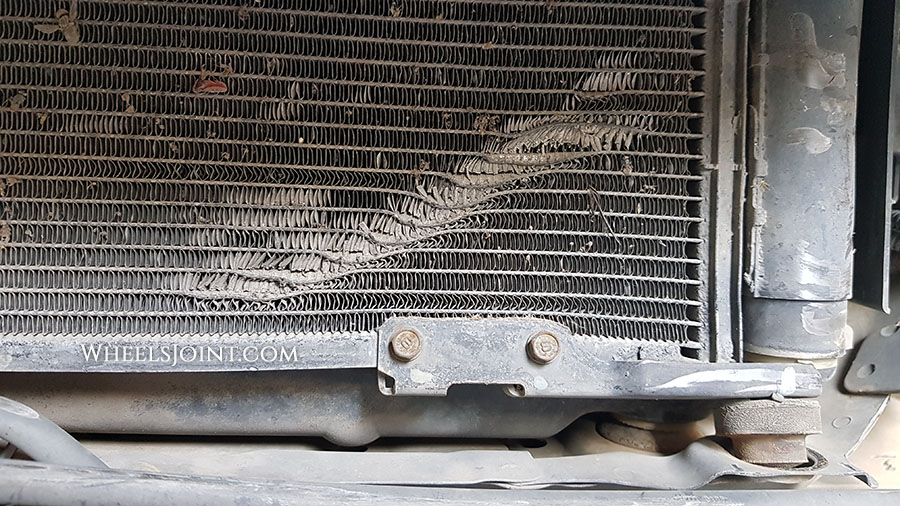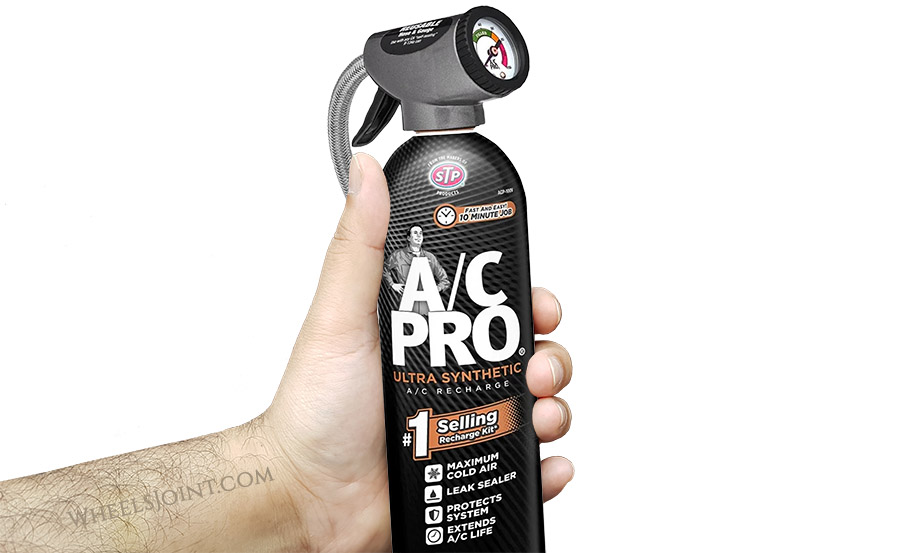The refrigerant is the magic compound running through the AC system of Vauxhall Corsa that makes it possible to blow super chilled air in the blistering heat. What happens when the refrigerant level gets too low?

The only most prominent symptom of low AC refrigerant in Vauxhall Corsa is warm air from the AC vents. Insufficient amount of refrigerant in the AC system is one of the leading causes of AC not cooling properly. This can happen due to a leak or if the AC has not been recharged for a long time.
Refrigerant leak
A low refrigerant level in your Corsa does not necessarily mean there is a leak. Ideally, the refrigerant should never leak in a properly sealed AC system, but most car AC systems do leak small amount of refrigerant over time due to minor imperfections and will need recharging after every few years.
If you don’t service the AC system in your Corsa for a long time, the refrigerant level will eventually get so low that the system loses its cooling capacity. Just have it refilled and you can drive with pleasant temperatures again. If the refrigerant level goes down again quickly, it means there is probably a leak.
Refrigerant leak causes
Refrigerant leak in Corsa can be caused by leaking O-ring seals, leaking condenser or evaporator core, or a cracked hose. The leak can be diagnosed by injecting small amount of fluorescent dye into the AC system. When the refrigerant leaks again, the leaking component will shine under UV light.

How to recharge AC refrigerant the easy way
There are two ports in the air conditioning system of Corsa. One is labelled H for high-pressure and the other one is labelled L for low-pressure. You can recharge your AC through the low-pressure port with a do it yourself AC recharge kit.

- Open the hood of your Corsa.
- Check which type of refrigerant your vehicle uses. This information is typically located under the hood and/or in the owners manual.
- Start the engine.
- Turn on the AC and set it to the coldest setting, and the fan speed to maximum.
- Remove the cap from the low pressure service port labelled L, and connect the AC recharge kit.

Note: If the ports are not labelled, try connecting the recharge kit to both unlabeled ports on the AC hoses. The recharge kit will only properly connect to the low pressure port, and will not fit the high pressure port. - Shake the canister briefly and release the refrigerant into the system until the recommended pressure has been achieved.
Note: See next section for recommended pressure values.
Recommended video
Warning: Wear gloves and safety glasses before recharging the AC to avoid accidental exposure to harmful chemicals in the refrigerant. It is also cryogenic and can cause severe frostbite when it comes in contact with the skin.
Overcharged refrigerant
Just like with low refrigerant, the AC in Corsa will blow warm air only if the AC system is overcharged with refrigerant. An overcharged system not only affects cooling performance but can also damage the compressor and sometimes can cause a major leak.
Ambient temperature affect on refrigerant pressure
The refrigerant pressure is affected by the outside atmospheric temperature. So, even if you recharged your Corsa AC at the recommended pressure, the system could still over pressurize when the ambient temperatures get warmer.
Most modern vehicles use R-134a refrigerant, but newer vehicles are increasingly using R-1234yf as a more environmentally friendly replacement. The pressure values based on ambient temperatures differ depending on the type of the refrigerant. Check your vehicle’s owners manual or look under the hood to find the type of the refrigerant your vehicle uses.
Low side pressure values R134a vs R1234yf
| Ambient Temperature | R-134a | R-1234yf |
| 70°F (21°C) | 35-40 psi | 20-30 psi |
| 80°F (27°C) | 40-50 psi | 25-35 psi |
| 90°F (32°C) | 45-55 psi | 30-40 psi |
| 100°F (38°C) | 45-55 psi | 35-45 psi |
| 110 °F (43°C) | 45-55 psi | 40-50 psi |
Check refrigerant pressure
Connect the pressure gauge to the low pressure (L) port in Corsa. If the pressure is higher than the recommended values, let some refrigerant out preferably into an empty tank since releasing the refrigerant into the air is harmful for the environment and is against the law.
The proper way
The DIY AC recharge kit method is considered as a quick fix, and is usually not recommended by the professionals. The proper way is the complete evacuation of the refrigerant from the AC system with a recovery machine, then refilling the precise amount of refrigerant by weight based on the manufacturer specifications.

Conclusion
There are many reasons why your Vauxhall Corsa AC is blowing warm air. When looking for the reason, you should always start with the most obvious cause, insufficient amount of refrigerant.
In any case, it is advisable for laypersons to visit a workshop. A professional mechanic can swiftly diagnose the poor AC cooling issue for you.


